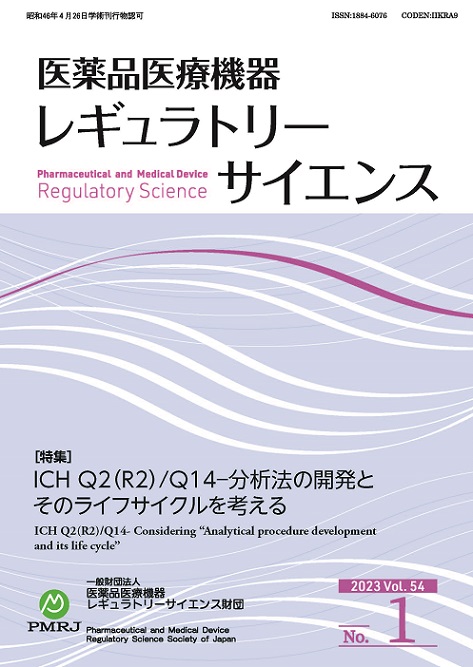Volume 54, Issue 1
Displaying 1-13 of 13 articles from this issue
- |<
- <
- 1
- >
- >|
-
2023 Volume 54 Issue 1 Pages 2-13
Published: 2023
Released on J-STAGE: March 10, 2023
Download PDF (1056K) -
2023 Volume 54 Issue 1 Pages 14-21
Published: 2023
Released on J-STAGE: March 10, 2023
Download PDF (562K) -
2023 Volume 54 Issue 1 Pages 22-29
Published: 2023
Released on J-STAGE: March 10, 2023
Download PDF (551K) -
2023 Volume 54 Issue 1 Pages 30-35
Published: 2023
Released on J-STAGE: March 10, 2023
Download PDF (417K)
-
2023 Volume 54 Issue 1 Pages 36-42
Published: 2023
Released on J-STAGE: March 10, 2023
Download PDF (399K)
-
2023 Volume 54 Issue 1 Pages 43-46
Published: 2023
Released on J-STAGE: March 10, 2023
Download PDF (322K) -
2023 Volume 54 Issue 1 Pages 47-50
Published: 2023
Released on J-STAGE: March 10, 2023
Download PDF (263K) -
2023 Volume 54 Issue 1 Pages 51-54
Published: 2023
Released on J-STAGE: March 10, 2023
Download PDF (315K)
-
2023 Volume 54 Issue 1 Pages 55-68
Published: 2023
Released on J-STAGE: March 10, 2023
Download PDF (6036K)
-
2023 Volume 54 Issue 1 Pages 69-81
Published: 2023
Released on J-STAGE: March 10, 2023
Download PDF (4536K)
-
2023 Volume 54 Issue 1 Pages 82-86
Published: 2023
Released on J-STAGE: March 10, 2023
Download PDF (261K) -
2023 Volume 54 Issue 1 Pages 87-91
Published: 2023
Released on J-STAGE: March 10, 2023
Download PDF (759K)
-
2023 Volume 54 Issue 1 Pages 92-96
Published: 2023
Released on J-STAGE: March 10, 2023
Download PDF (312K)
- |<
- <
- 1
- >
- >|
